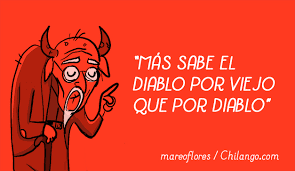Four Articles and a Poem
Weekly, I post four articles that I found significant and a poem and some comments about what we can learn from them. Our
lives are enriched by seeing better. Each week, one article comes from
the world of photography, a discipline that is about seeing. Another
article comes from the world of technology, hence seeing something of
the future. Another article takes up an aspect of our life together,
seeing more clearly the other. Another article refers to faith, seeing
the unseen. Finally, the weekly post concludes with a poem, because
poetry is about seeing words whose arrangement allows us to see anew.
Tomorrow, August 9, is the 72nd anniversary of the death of Franz Jägerstätter, and it is the 70th anniversary of the bomb on Nagasaki. It is also the anniversary of Michael Brown's death in Ferguson, MO. We would do well to pray for peace.
Here is a poem from the late Denise Levertov entitled "Making Peace" from her 1987 book Breathing from Water. This poem speaks to our common work in making peace, between nations, within cities, and within our hearts.
"Making Peace"
By Denise Levertov
A voice from the dark called out,
‘The poets must give us
imagination of peace, to oust the intense, familiar
imagination of disaster. Peace, not only
the absence of war.’
But peace, like a poem,
is not there ahead of itself,
can’t be imagined before it is made,
can’t be known except
in the words of its making,
grammar of justice,
syntax of mutual aid.
A feeling towards it,
dimly sensing a rhythm, is all we have
until we begin to utter its metaphors,
learning them as we speak.
A line of peace might appear
if we restructured the sentence our lives are making,
revoked its reaffirmation of profit and power,
questioned our needs, allowed
long pauses . . .
A cadence of peace might balance its weight
on that different fulcrum; peace, a presence,
an energy field more intense than war,
might pulse then,
stanza by stanza into the world,
each act of living
one of its words, each word
a vibration of light—facets
of the forming crystal.
Tomorrow, August 9, is the 72nd anniversary of the death of Franz Jägerstätter, and it is the 70th anniversary of the bomb on Nagasaki. It is also the anniversary of Michael Brown's death in Ferguson, MO. We would do well to pray for peace.
- U.S. Mayors Say Ferguson Could Happen To Us. According to Politico.com, nine out of ten mayors surveyed expressed concern about the state of race relations and police in their city, with almost a third of them "deeply concerned." It is a telling statistic, but it also suggests that we might need to question that 10% of mayors that do not seem particularly concerned. Our mayors are concerned; what are we going to do to improve race relations in the U.S.?
- Data Science for Social Good: Improving Services for Homeless Families. Today, it seems that everyone loves big data. In an article written by Fabliha Ibnat, Jason Portenoy, Chris Suberlak, Joan Wang, all scholars from the University of Washington, the writers ask the question: "But how does one use data to promote social good? How does one harness the lessons learned in analyzing data from the internet, or data from scientific measurements, to address a social problem as challenging and complex as family homelessness?" A grant from the Bill and Melinda Gates Foundation has allowed them to tackle the question. To improve the quality of life for all, I am excited that researchers will apply everything in the tool box to find the best ways forward.
- On social justice, Francis isn’t rethinking so much as recycling. Here is another post from John L. Allen, Jr. that gives us a worthy reminder: Pope Francis is not innovating so much as recycling Catholic Social Teaching. For those who are aghast at what they hear from the Pontiff, some history may help, especially before he visits the U.S. in September.
- Photo: "Nothing But A Memory." Photographer Amy Heiden explores "lost and forgotten history." Her niche is photography of historical and abandoned sites. As she puts it:"To me, all these places have a story to tell. Years ago, the now empty asylums, factories, churches, resorts, ships and aircrafts were saturated with life. The people working, inhabiting and visiting these locations were experiencing many of the same emotions we feel today; hope, despair, love, sorrow, happiness and tragedy. As these locations vanish, their stories are being forgotten. I strive to fully document these sites in an attempt to preserve these memories before these historic relics are gone forever."
Here is a poem from the late Denise Levertov entitled "Making Peace" from her 1987 book Breathing from Water. This poem speaks to our common work in making peace, between nations, within cities, and within our hearts.
"Making Peace"
By Denise Levertov
A voice from the dark called out,
‘The poets must give us
imagination of peace, to oust the intense, familiar
imagination of disaster. Peace, not only
the absence of war.’
But peace, like a poem,
is not there ahead of itself,
can’t be imagined before it is made,
can’t be known except
in the words of its making,
grammar of justice,
syntax of mutual aid.
A feeling towards it,
dimly sensing a rhythm, is all we have
until we begin to utter its metaphors,
learning them as we speak.
A line of peace might appear
if we restructured the sentence our lives are making,
revoked its reaffirmation of profit and power,
questioned our needs, allowed
long pauses . . .
A cadence of peace might balance its weight
on that different fulcrum; peace, a presence,
an energy field more intense than war,
might pulse then,
stanza by stanza into the world,
each act of living
one of its words, each word
a vibration of light—facets
of the forming crystal.




Comments
Post a Comment